
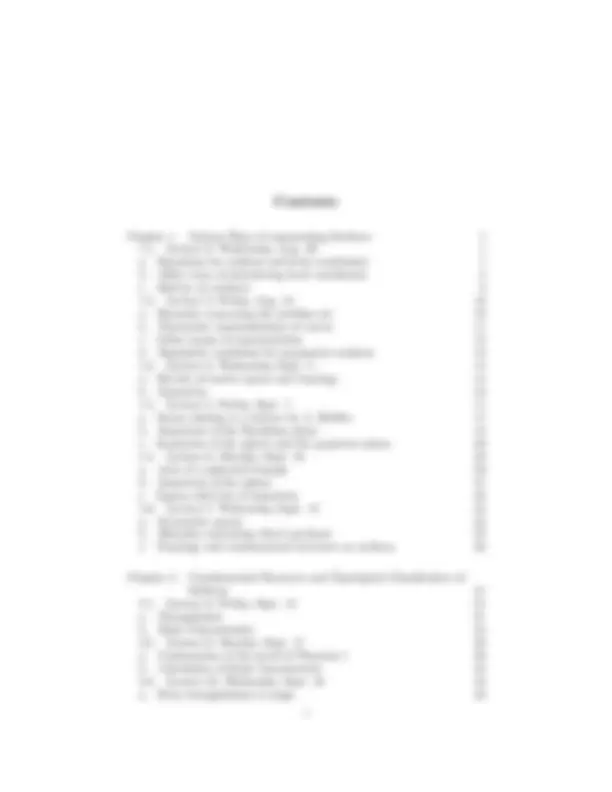
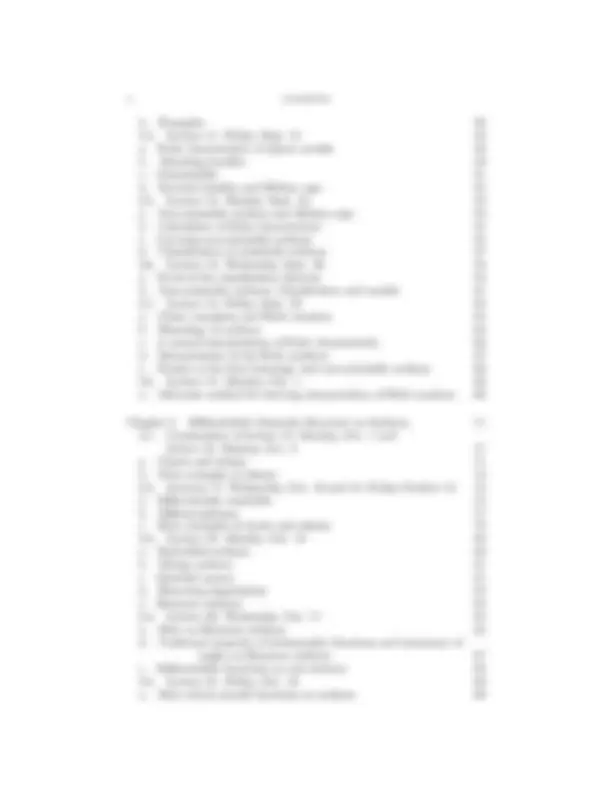
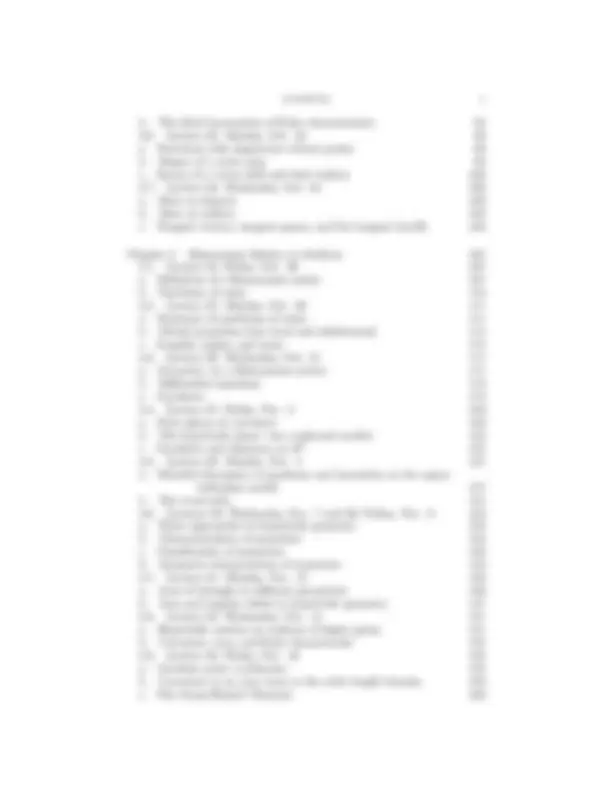


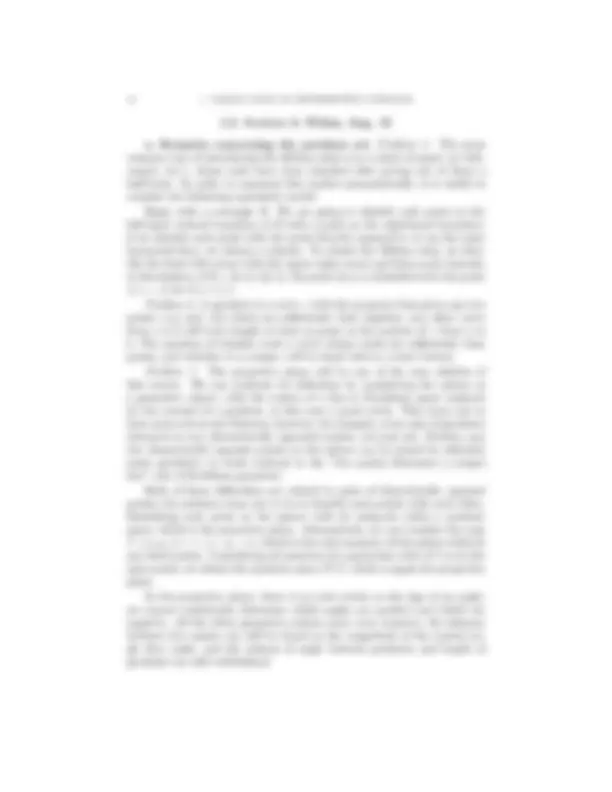


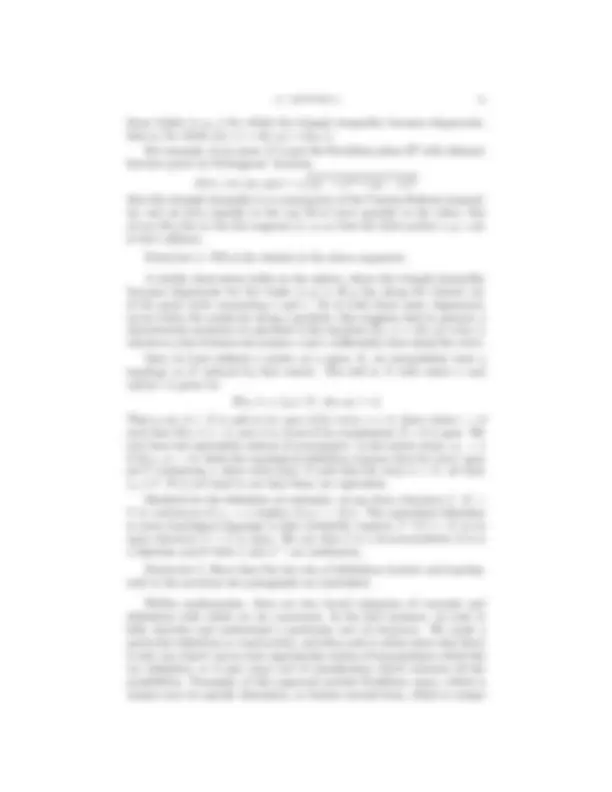

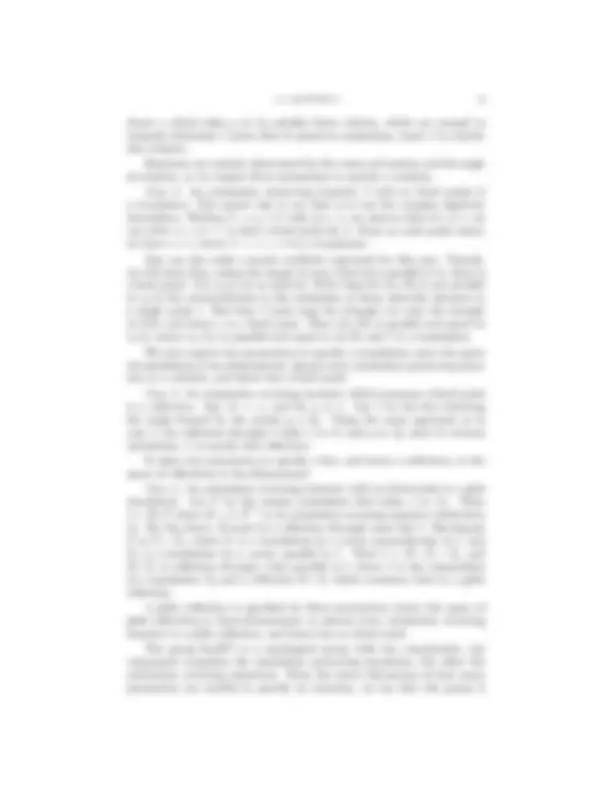
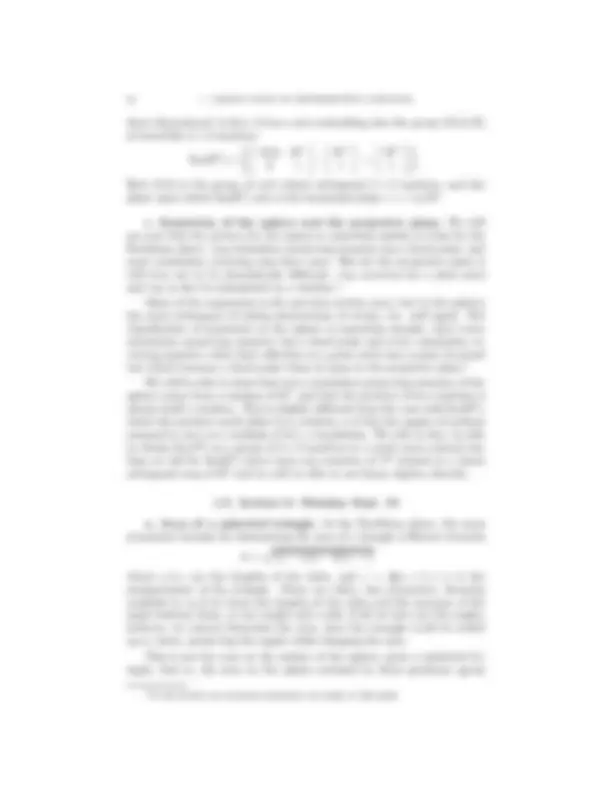



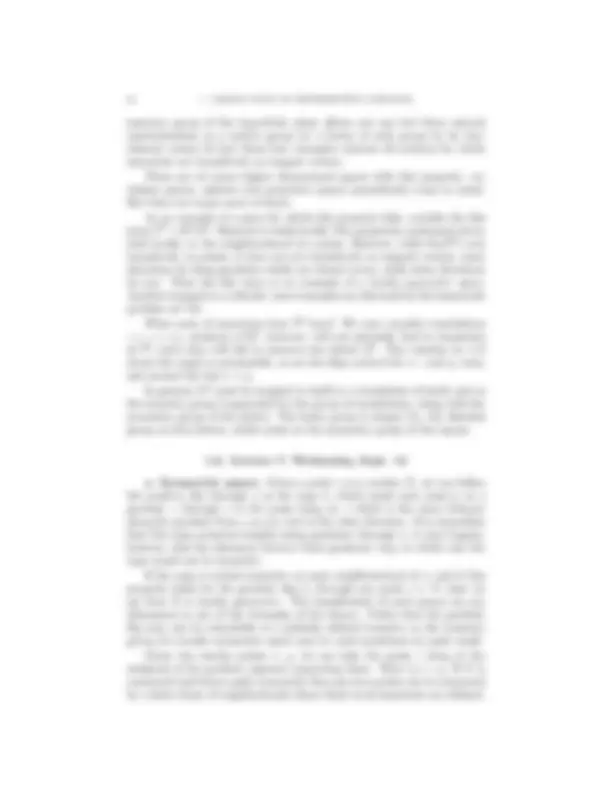

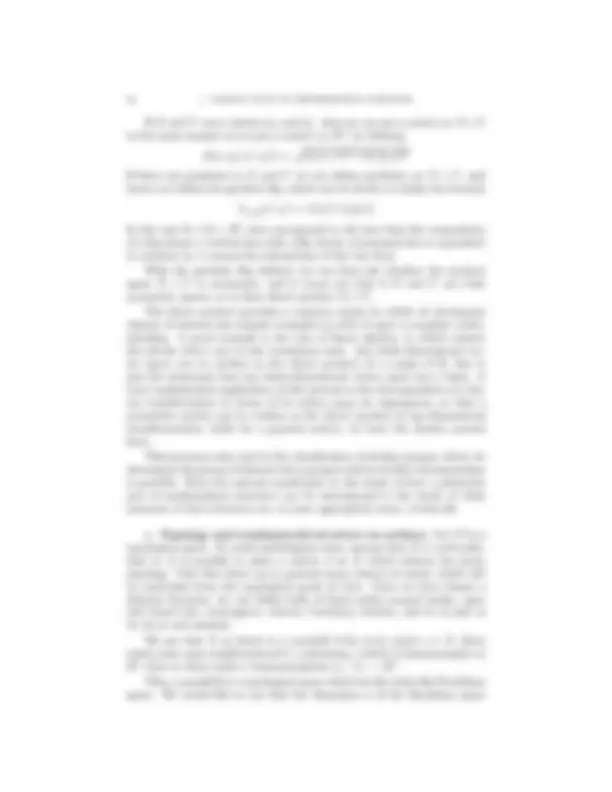





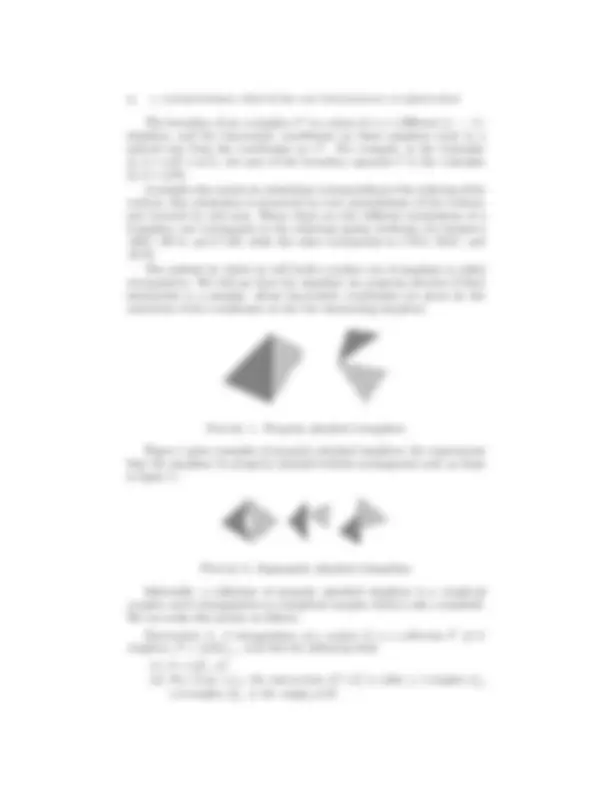
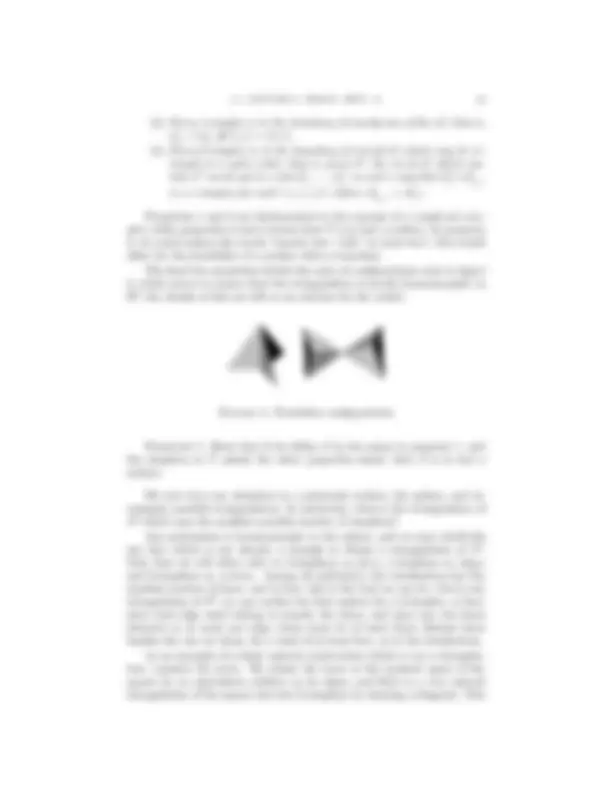




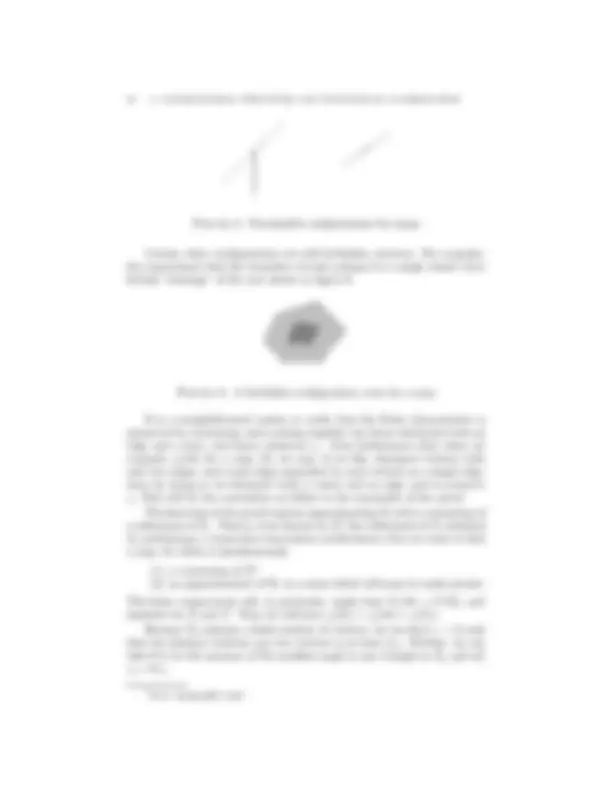
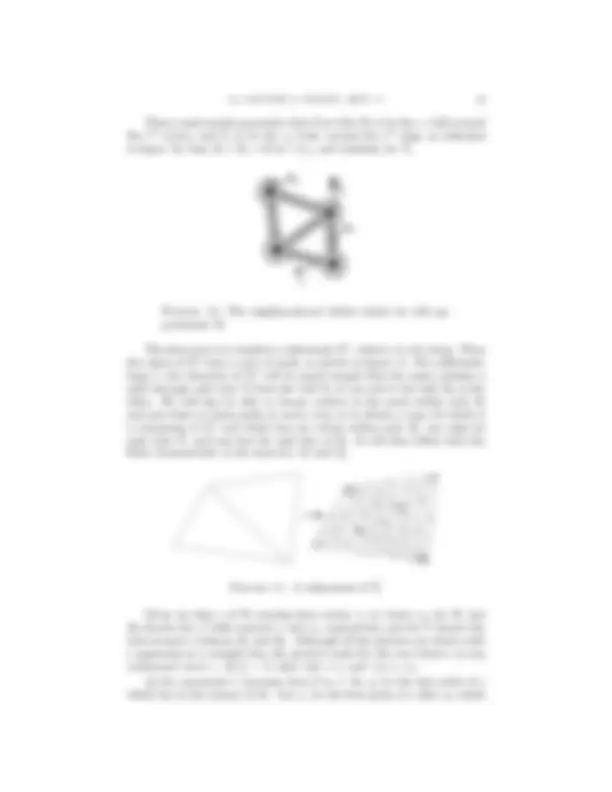

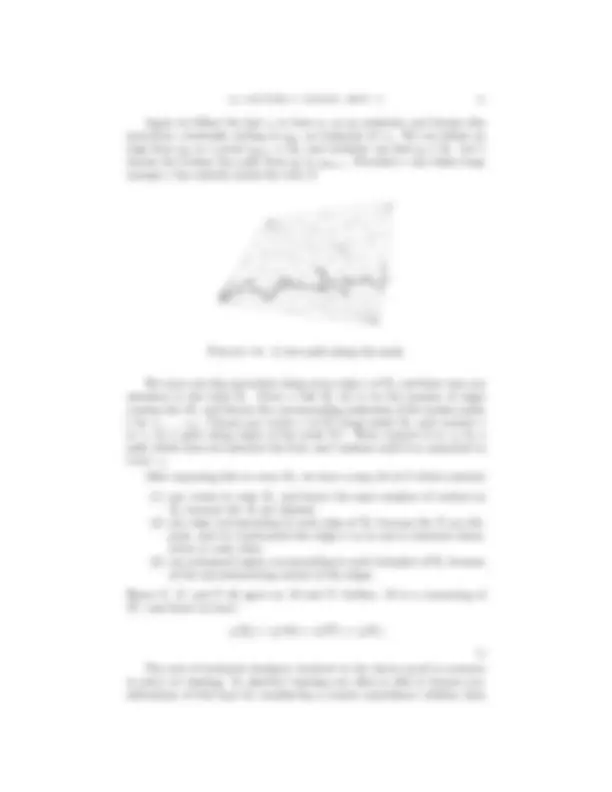

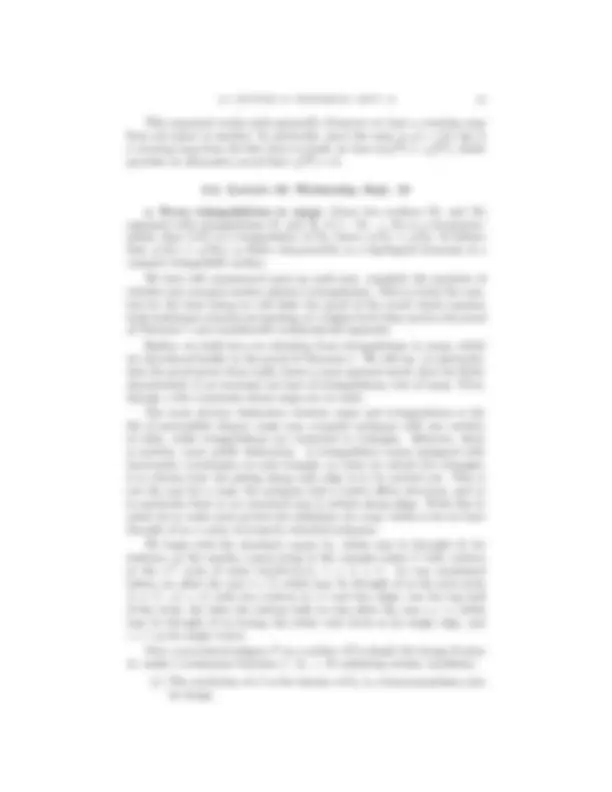




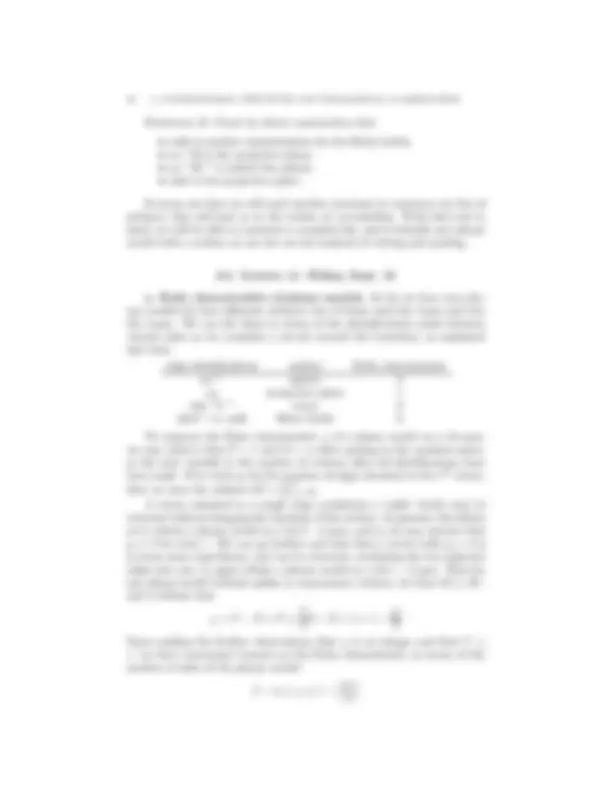


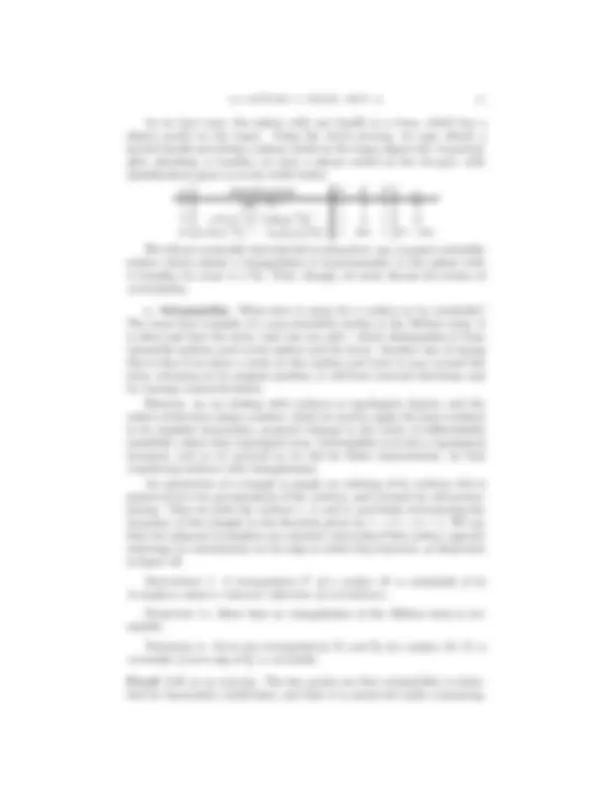

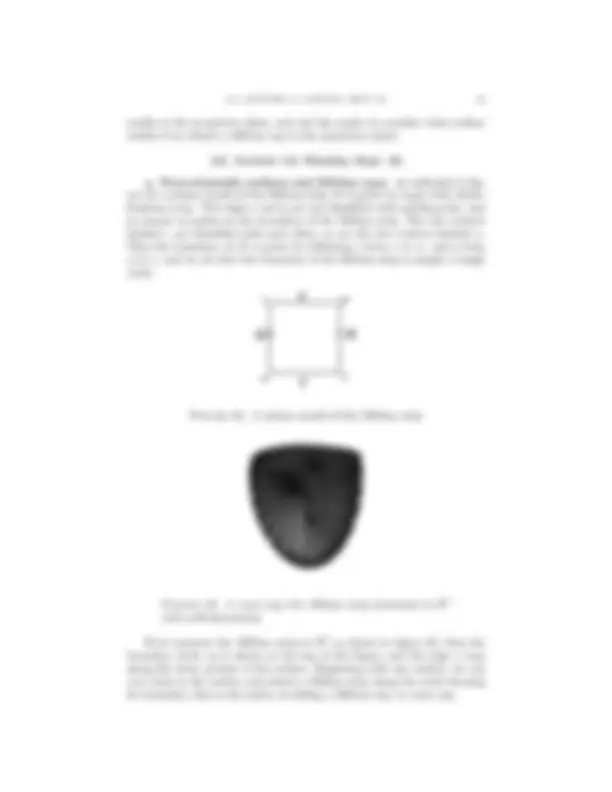

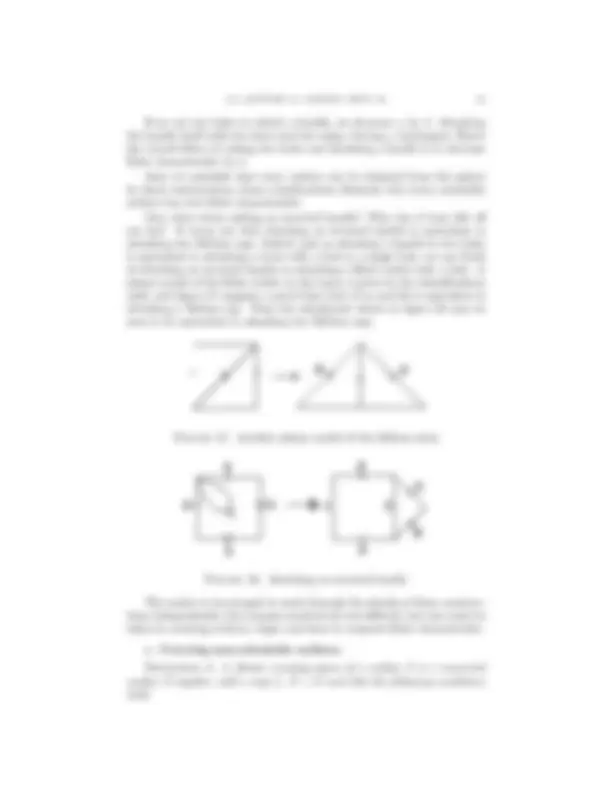

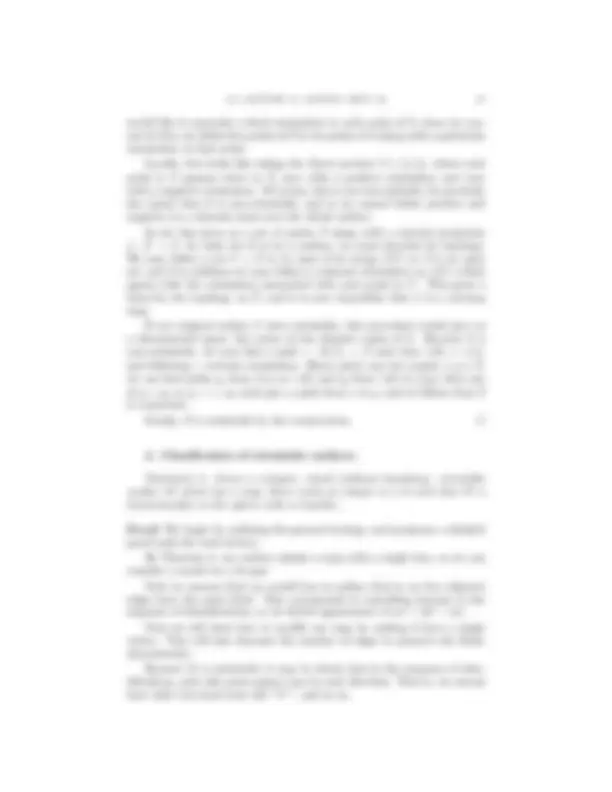

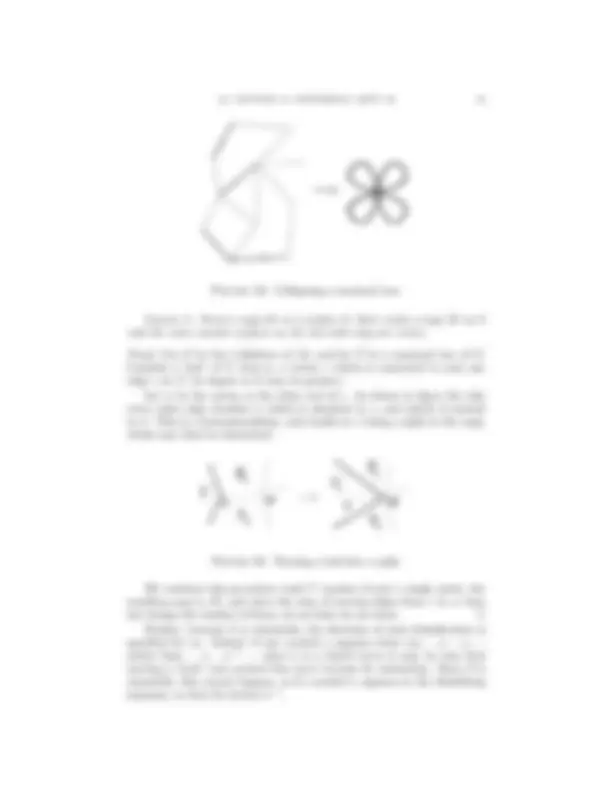

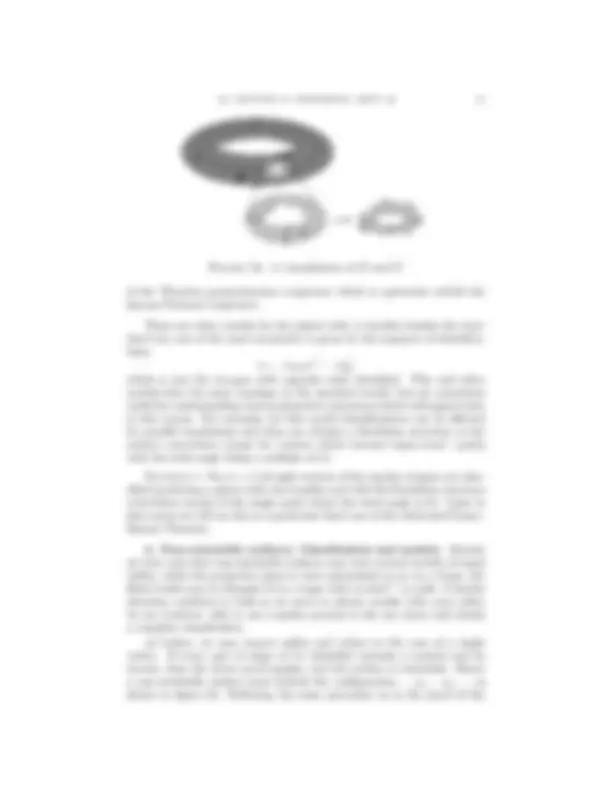
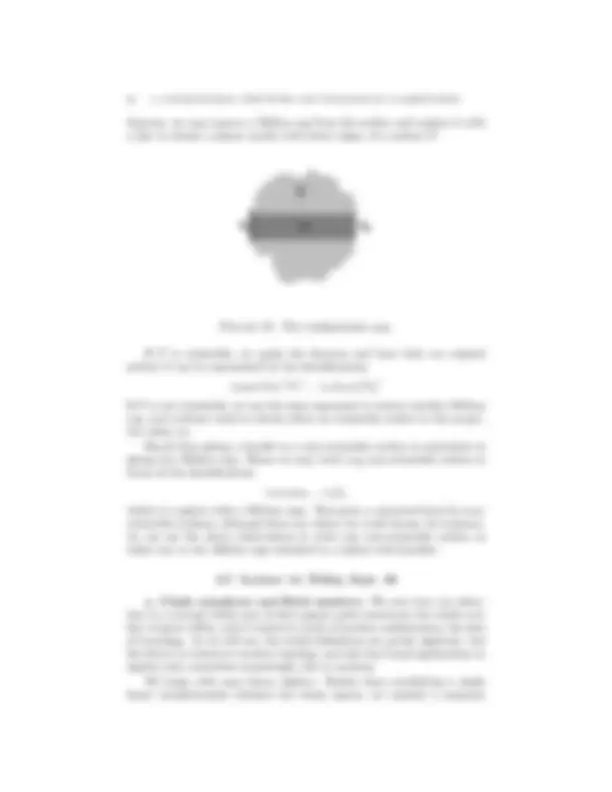

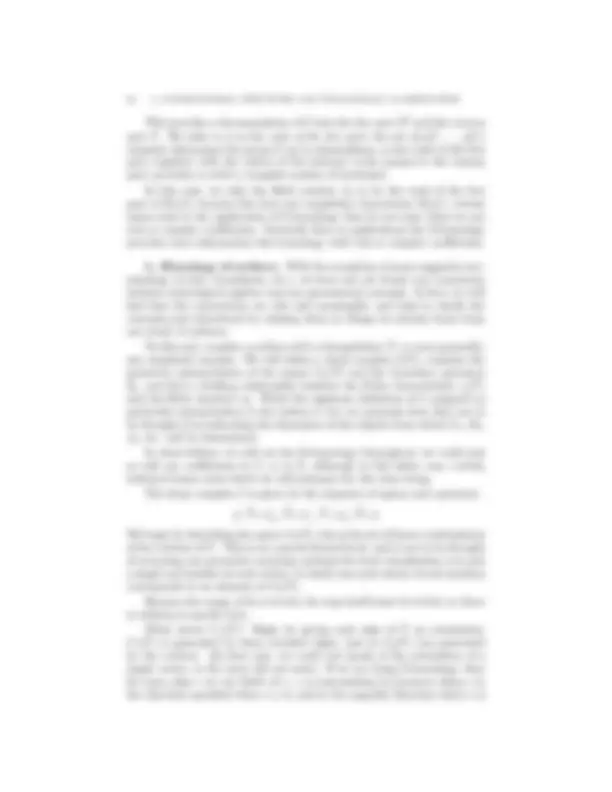

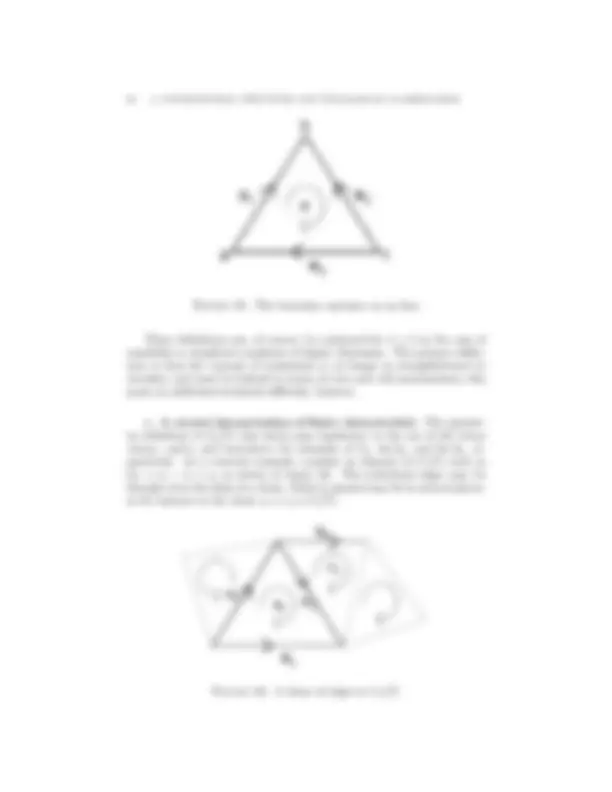




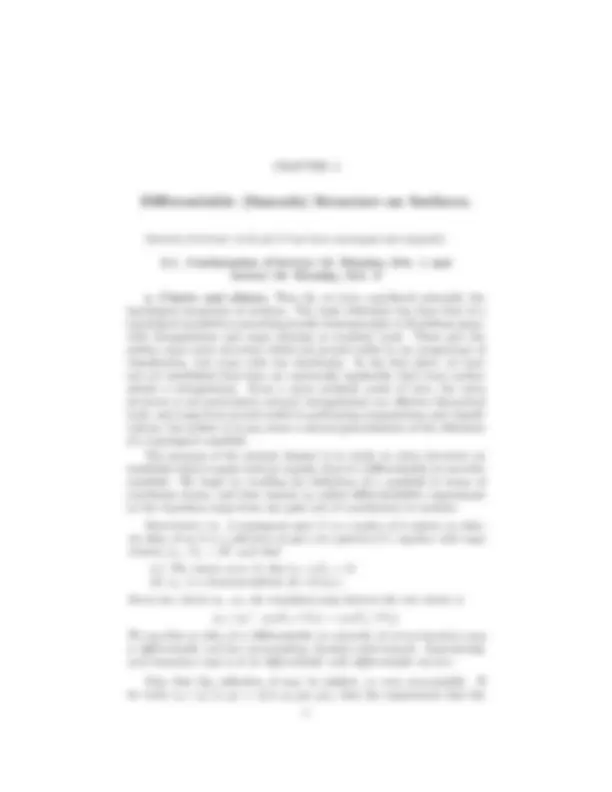
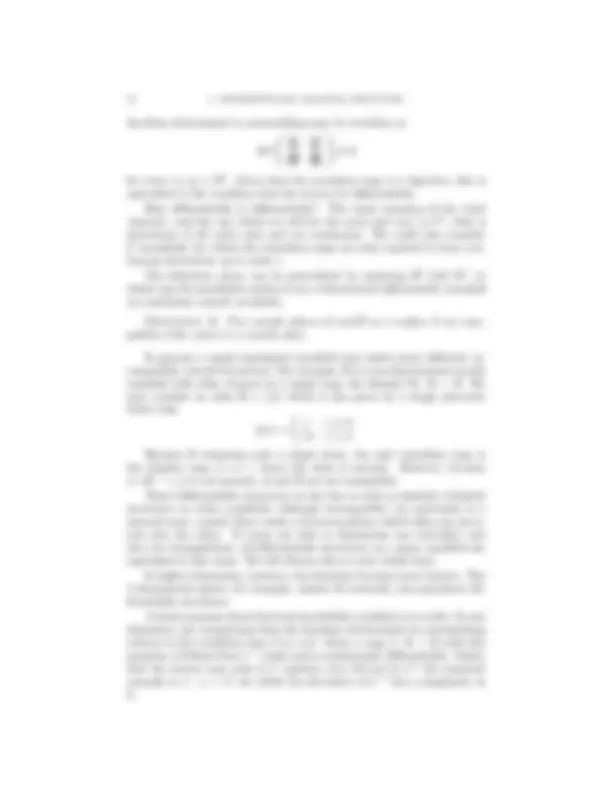

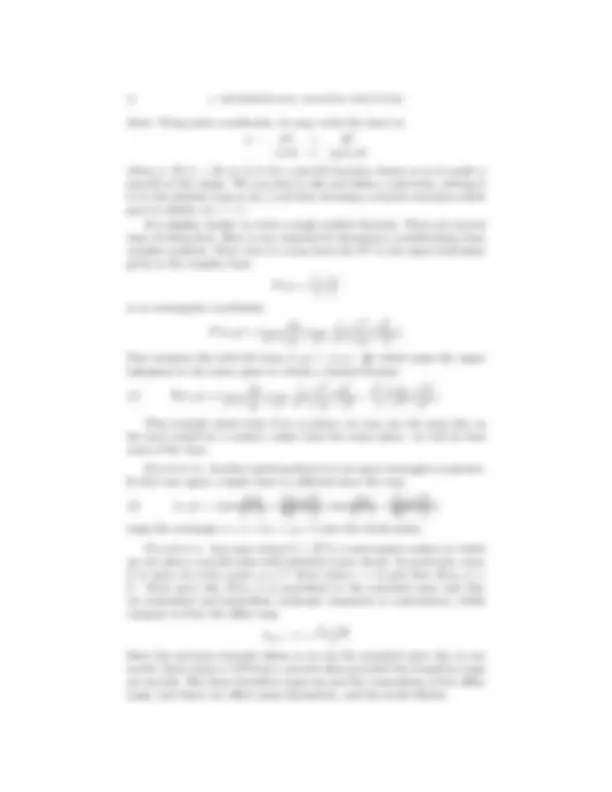


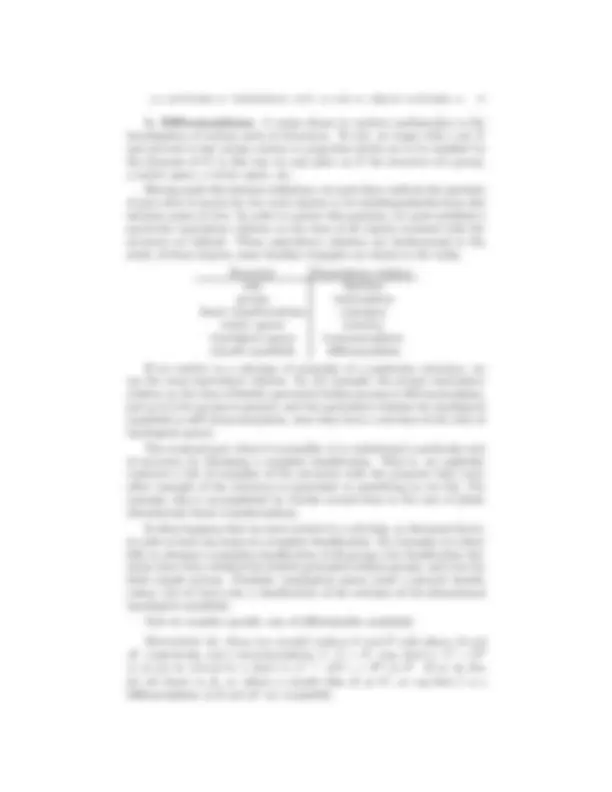



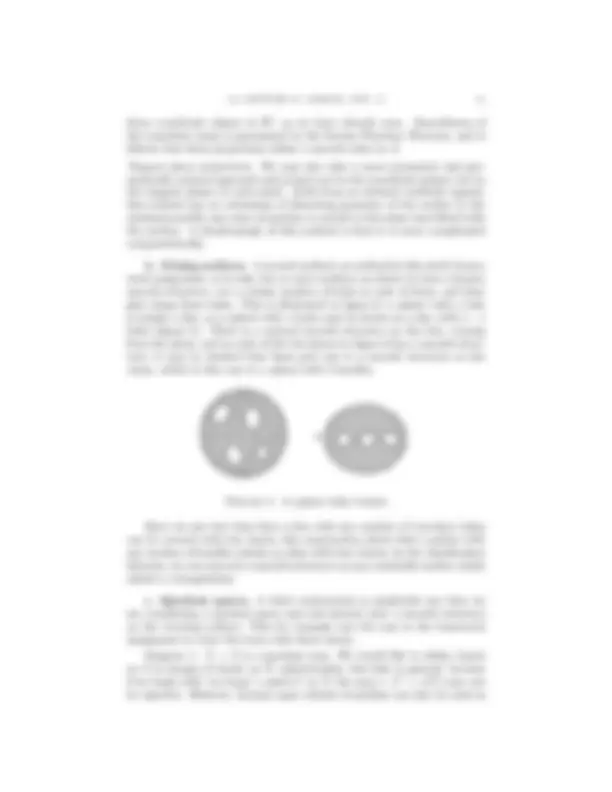





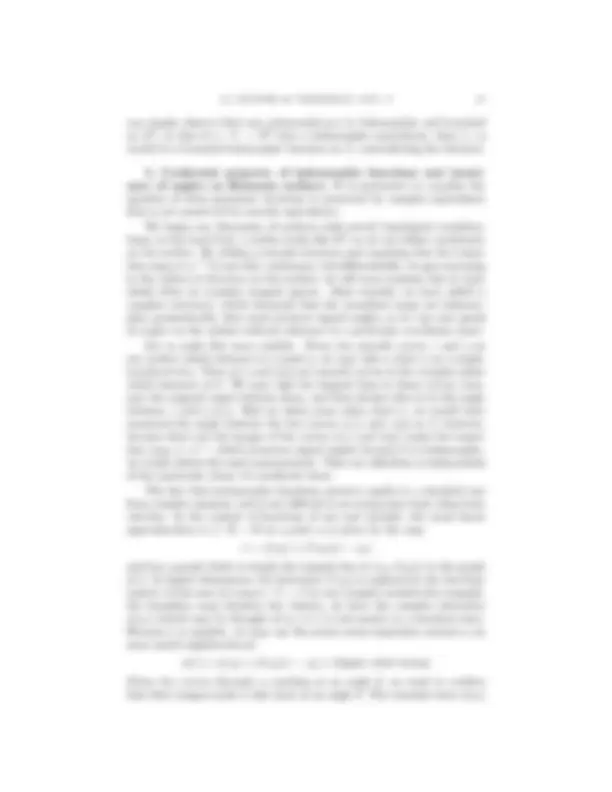

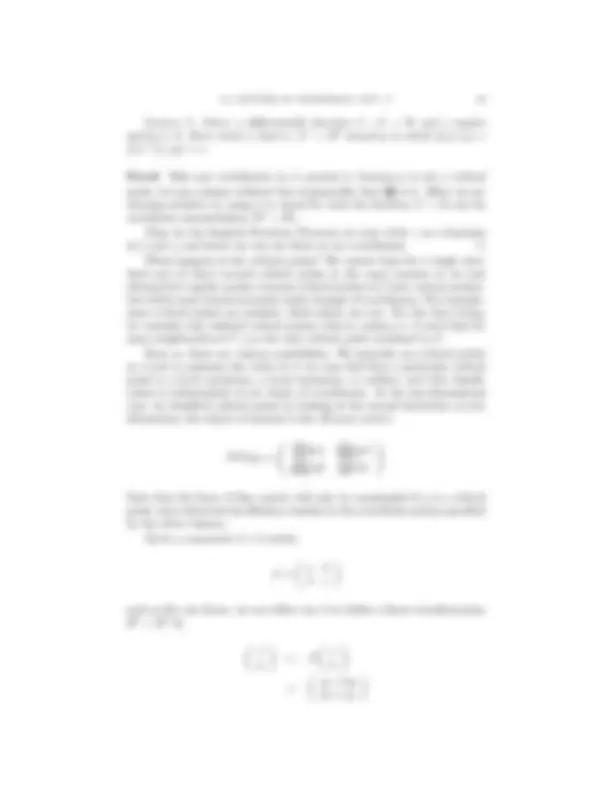
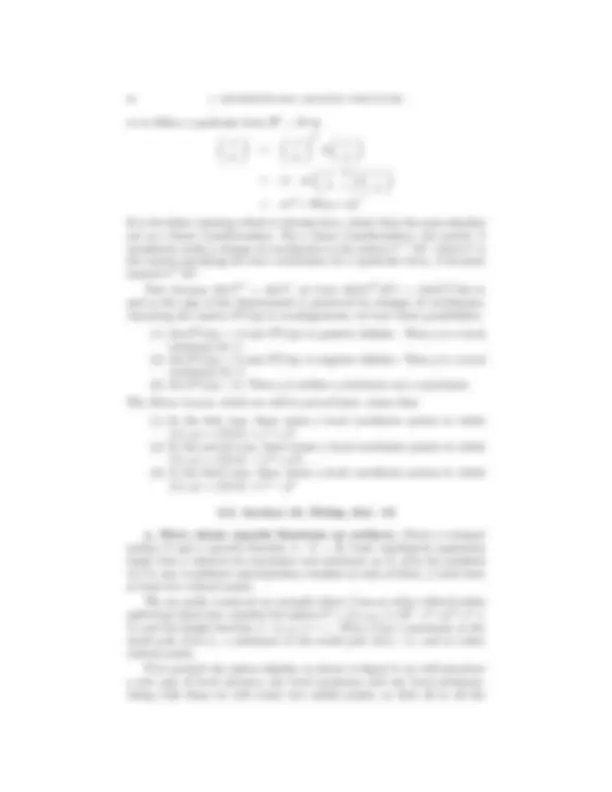

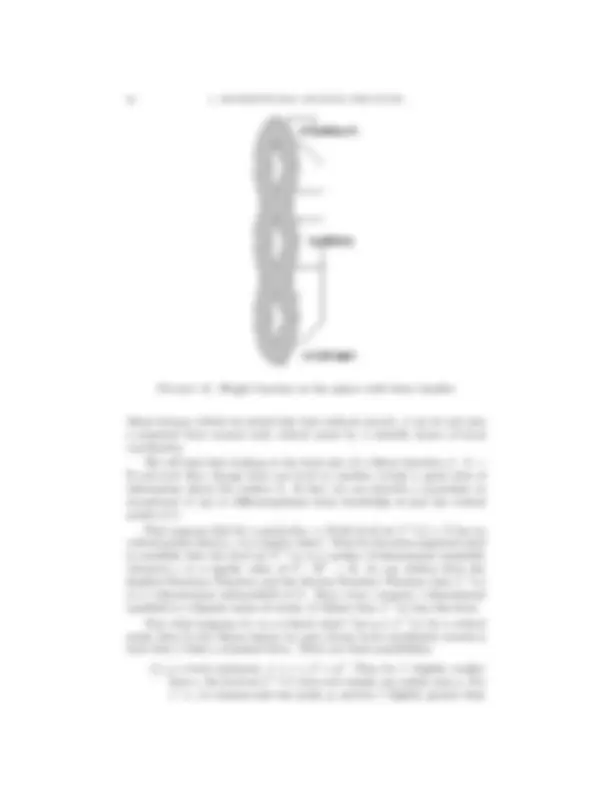


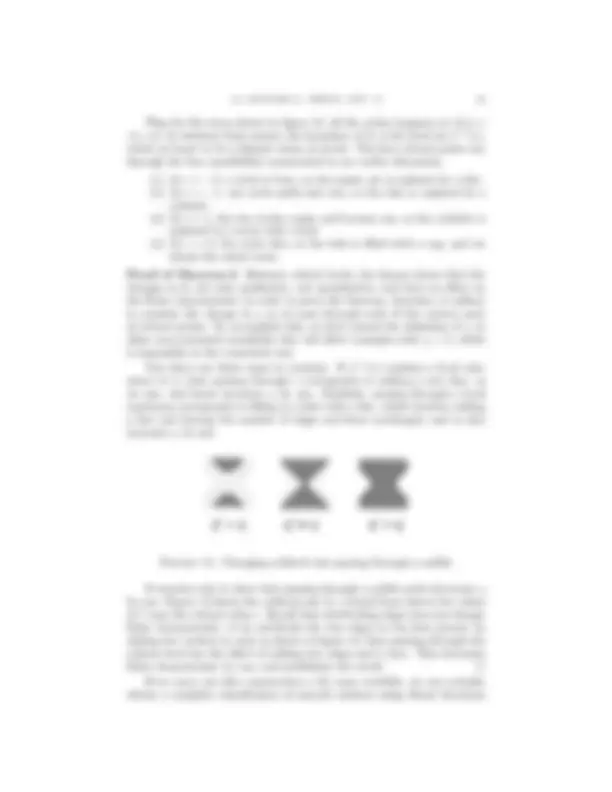

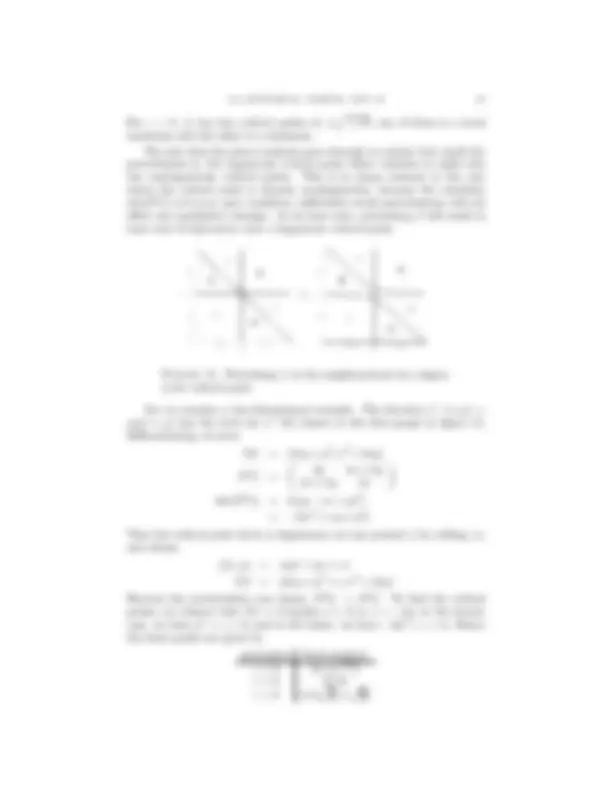


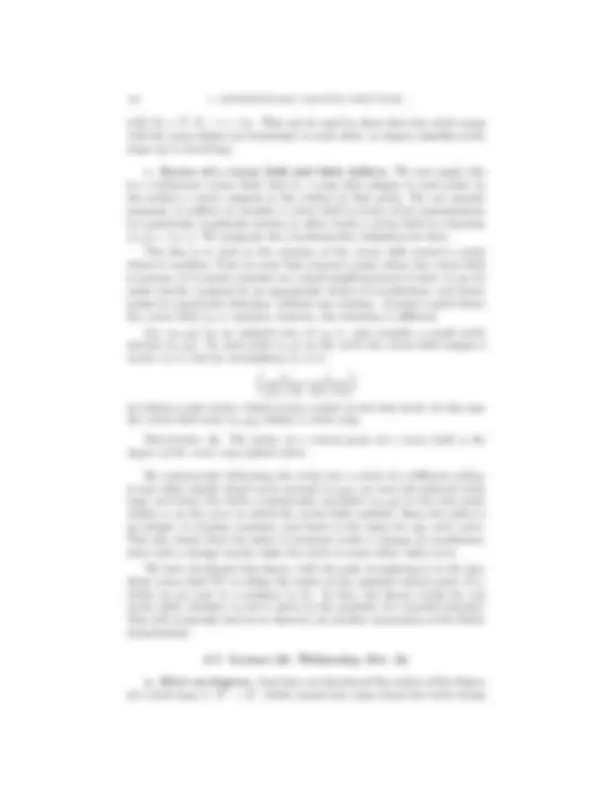


Estude fácil! Tem muito documento disponível na Docsity

Ganhe pontos ajudando outros esrudantes ou compre um plano Premium


Prepare-se para as provas
Estude fácil! Tem muito documento disponível na Docsity
Prepare-se para as provas com trabalhos de outros alunos como você, aqui na Docsity
Os melhores documentos à venda: Trabalhos de alunos formados
Prepare-se com as videoaulas e exercícios resolvidos criados a partir da grade da sua Universidade
Responda perguntas de provas passadas e avalie sua preparação.

Ganhe pontos para baixar
Ganhe pontos ajudando outros esrudantes ou compre um plano Premium
Comunidade
Peça ajuda à comunidade e tire suas dúvidas relacionadas ao estudo
Descubra as melhores universidades em seu país de acordo com os usuários da Docsity
Guias grátis
Baixe gratuitamente nossos guias de estudo, métodos para diminuir a ansiedade, dicas de TCC preparadas pelos professores da Docsity
A set of lecture notes on the combinatorial structure and topological classification of surfaces. The notes cover topics such as symmetric spaces, direct products, topology and combinatorial structure on surfaces, non-orientable surfaces, calculation of euler characteristic, and riemannian metrics on surfaces. The notes also discuss the identification of points on surfaces and the classification of orientable surfaces.
Tipologia: Esquemas
1 / 179

Esta página não é visível na pré-visualização
Não perca as partes importantes!





























































































1.1. Lecture 2: Wednesday, Aug. 29
a. Equations for surfaces and local coordinates. Consider the problem of writing an equation for the torus; that is, finding a function F : R^3 → R such that the torus is the solution set to F (x, y, z) = 0. (We will consider parametric representations later on). Because the torus is a surface of revolution, we begin with the equation for a circle in the x − z plane with radius 1 and centre at (2, 0):
S^1 = {(x, z) ∈ R^2 : (x − 2)^2 + z^2 = 1}
To obtain the surface of revolution, we introduce y into the equation by making the substitution x 7 →
x^2 + y^2 , and obtain
T^2 = {(x, y, z) ∈ R^3 : (
x^2 + y^2 − 2)^2 + z^2 − 1 = 0}
At first glance, then, setting F (x, y, z) = (
x^2 + y^2 − 2)^2 + z^2 − 1 gives our desired solution. However, this suffers from the defect that F is not C^1 along the z-axis; we can overcome this fairly easily with a little algebra. Expanding the equation, isolating the square root, and squaring both sides, we obtain
x^2 + y^2 + 4 − 4
x^2 + y^2 + z^2 − 1 = 0 x^2 + y^2 + z^2 + 3 = 4
x^2 + y^2 (x^2 + y^2 + z^2 + 3)^2 − 16(x^2 + y^2 ) = 0
It can be checked that this new choice of F does not introduce any extraneous points to the solution set, and now F is C^1 on all of R^3.
This argument cannot be applied literally to the homework problem N (see optional exercise below) but the general method can be used; namely one should start from the intersection of a sphere with two handles with a horizontal plane which may look e.g. as the union of three circles and build the rest of the surface symmetrically above and below.
Exercise 1. Prove that a sphere with m ≥ 2 handles cannot be repre- sented as a surface of revolution.
What good is all this? What benefit do we gain from representing the torus, or any other surface, by an equation? To answer this, we first back- track a bit and discuss graphs of functions. In particular, given a function
7
8 1. VARIOUS WAYS OF REPRESENTING SURFACES
f : R^2 → R, the graph of f is
graph f = {(x, y, z) ∈ R^3 : z = f (x, y)}
Assuming f is ‘nice’, its graph is a ‘nice’ surface sitting in R^3. Of course, most surfaces cannot be represented globally as the graph of such a function; the sphere, for instance, contains two points on the z-axis, and hence we require at least two functions to describe it in this manner.
In fact, more than two functions are required if we adopt this approach. The sphere is given as the solution set of x^2 + y^2 + z^2 = 1, so we can write it as the union of the graphs of f 1 and f 2 , where
f 1 (x, y) =
1 − x^2 − y^2 f 2 (x, y) = −
1 − x^2 − y^2
The graph of f 1 is the northern hemisphere, the graph of f 2 the southern. However, we run into problems at the equator z = 0, where the derivatives of f 1 and f 2 become infinite; we permit ourselves to use only functions with bounded derivatives. By using graphs with x or y as the dependent variable, we can cover the eastern and western hemispheres, as it were, but find that we require six graphs to deal with the entire sphere.
This approach has wide validity; if we have any surface S given as the zero set of a function F : R^3 → R, we say that a point on S is regular if the gradient of F is nonzero at that point. At any regular point, then, we can apply the implicit function theorem and obtain a neighbourhood of the point which is the graph of some function; in essence, we are projecting patches of our surface to the various coordinate planes in R^3. If our surface comprises only regular points, this allows us to describe the entire surface in terms of these local coordinates.
Recall that if the gradient (or, equivalently all partial derivatives) vanish at at point, the set of solutions may not look like a nice surface: a trivial example is the sphere or radius zero x^2 + y^2 + z^2 = 0 ; a more interesting one is the cone x^2 + y^2 − z^2 = 1
near the origin.
b. Other ways of introducing local coordinates. From the geo- metric point of view, however, this choice of planes is somewhat arbitrary and unnatural; for example, projecting the northern hemisphere of S^2 to the x − y coordinate plane represents points in the ‘arctic’ quite well, but distorts things rather badly near the equator, where the derivative of the function blows up. If we are interested in angles, distances, and other geo- metric qualities of the surface, a more natural choice is to project to the tangent plane at each point; this will lead us eventually to the notion of a Riemannian manifold. If the previous approach represented an effort to draw a ‘world map’ of as much of the surface as possible, without regard
10 1. VARIOUS WAYS OF REPRESENTING SURFACES
1.2. Lecture 3: Friday, Aug. 31
a. Remarks concerning the problem set. Problem 5. The most common way of introducing the M¨obius strip is as a sheet of paper (or belt, carpet, etc.), whose ends have been attached after giving one of them a half-twist. In order to represent this surface parametrically, it is useful to consider the following equivalent model:
Begin with a rectangle R. We are going to identify each point on the left-hand vertical boundary of R with a point on the right-hand boundary; if we identify each point with the point directly opposed to it (on the same horizontal line), we obtain a cylinder. To obtain the M¨obius strip, we iden- tify the lower left corner with the upper right corner and then move inwards; in this fashion, if R = [0, 1]×[0, 1], the point (0, t) is identified with the point (1, 1 − t) for 0 ≤ t ≤ 1.
Problem 6. A geodesic is a curve γ with the property that given any two points γ(a) and γ(b) which are sufficiently close together, any other curve from a to b will have length at least as great as the portion of γ from a to b. The question of whether such a curve always exists for sufficiently close points, and whether it is unique, will be dealt with in a later lecture.
Problem 7. The projective plane will be one of the star exhibits of this course. We can motivate its definition by considering the sphere as a geometric object, with the notion of a line in Euclidean space replaced by the concept of a geodesic, in this case a great circle. This turns out to have some not-so-nice features, however; for example, every pair of geodesics intersects in two (diametrically opposite) points, not just one. Further, any two diametrically opposite points on the sphere can be joined by infinitely many geodesics, in stark contrast to the “two points determine a unique line” rule of Euclidean geometry.
Both of these difficulties are related to pairs of diametrically opposed points; the solution turns out to be to identify such points with each other. Identifying each point on the sphere with its antipode yields a quotient space, which is the projective plane. Alternatively, we can consider the map I : (x, y, z) 7 → (−x, −y, −z), which is the only isometry of the sphere without any fixed points. Considering all members of a particular orbit of I to be the same point, we obtain the quotient space S^2 /I, which is again the projective plane.
In the projective plane, there is no such notion as the sign of an angle; we cannot consistently determine which angles are positive and which are negative. All the other geometric notions carry over, however; the distance between two points can still be found as the magnitude of the central an- gle they make, and the notions of angle between geodesics and length of geodesics are still well-defined.
1.2. LECTURE 3 11
b. Parametric representations of curves. We often write a curve in R^2 as the solution of a particular equation; the unit circle, for example, is the set of points satisfying x^2 + y^2 = 1. This implicit representation becomes more difficult in higher dimensions; in general, each equation we require the coordinates to satisfy will remove a degree of freedom (assuming independence) and hence a dimension, so to determine a curve in R^3 we require not one, but two equations. The unit circle lying in the x − y plane is now the solution set of
x^2 + y^2 = 1 z = 0
This is a simple example, for which these equations pose no real difficulty. There are many examples which are more difficult to deal with in this man- ner, but which can be easily written down using a parametric representation. That is, we define the curve in question as the set of all points given by
(x, y, z) = (f 1 (t), f 2 (t), f 3 (t))
where t lies in the interval [a, b]. (Here a and b may be ±∞). In this representation, the circle discussed above would be written
x = cos t y = sin t z = 0
with 0 ≤ t ≤ 2 π. If we replace the third equation with z = t, we obtain not a circle, but a helix; the implicit representation of this curve as the solution set of two equations is rather more complicated. We could also multiply the expressions for x and y by t to describe a spiral on the cone, which would be similarly difficult to write implicitly.
Exercise 2. Find two equations whose common solution set is the helix.
If we expect our curve to be smooth, we must impose certain conditions on the coordinate functions fi. The first condition is that each fi be con- tinuously differentiable; this will guarantee the existence of a continuously varying tangent vector at every point along the curve. However, we must im- pose the further requirement that this tangent vector be nonvanishing, that is, that (f 1 ′)^2 + (f 2 ′)^2 + (f 3 ′)^2 6 = 0 holds everywhere on the curve. This re- quirement is sufficient, but not necessary, in order to guarantee smoothness of the curve.
As a simple but important example of what may happen when this condition is violated consider the curve (x, y) = (t^2 , t^3 ). The tangent vector (2t, 3 t^2 ) vanishes at t = 0, which in the picture appears as a cusp at the origin. So in this case, even though f 1 and f 2 are perfectly smooth functions, the curve itself is not smooth.
To see that the nonvanishing condition is not necessary, consider the curve x = t^3 , y = t^3. At t = 0 the tangent vector vanishes, but the curve
1.2. LECTURE 3 13
An example of a surface which is most easily represented without refer- ence to a particular embedding is the Klein bottle, which is a factor space of the square, or rectangle. As with the M¨obius strip, the left and right edges are identified with direction reversed, but in addition, the top and bottom edges are identified (without reversing direction). The Klein bottle cannot be embedded into R^3 ; the closest one can come is to imagine rolling the square into a cylinder, then attaching the ends of the cylinder after passing one end through the wall of the cylinder into the interior.
Of course, this results in the surface intersecting itself in a circle; in order to avoid this self-intersection, we could add a dimension and embed the surface into R^4. This allows for the four-dimensional analogue of lifting a section of string off the surface of a table in order to avoid having it touch a line drawn on the table. No such manoeuvre is possible in three dimen- sions, but the immersion of the Klein bottle into R^3 is still a popular shape, and some enterprising craftsman has been selling both “Klein bottles” and beer mugs in the shape of Klein bottles at the yearly meetings of American Mathematical Society. My two models were bought there.
We have already mentioned that the projective plane cannot be em- bedded in R^3 ; even surfaces which can be so embedded, such as the torus, lose some of their nicer properties in the process. The usual embedding of the torus destroys the symmetry between meridians and parallels; all of the meridians are the same size, but the size of the parallels varies. We can retain this symmetry by embedding in R^4 , the so-called flat torus. Parametrically, this is given by
x = r cos t y = r sin t z = r cos s w = r sin s
where s, t ∈ [0, 2 π]. We can also obtain the torus as a factor space, using the same method as in the definition of the projective plane or Klein bottle. Beginning with a rectangle, we identify opposite sides (with no reversal of direction); alternately, we can consider the family of isometries of R^2 given by Tm,n : (x, y) 7 → (x + m, y + n), where m, n ∈ Z, and mod out by orbits. This construction of T^2 as R^2 /Z^2 is exactly analogous to the construction of the circle S^1 as R/Z.
The flat torus along with the projective planes will be one of our star exhibits throughout this course.
d. Regularity conditions for parametric surfaces. A parametrisa- tion of a surface is given by a region U ⊂ R^2 with coordinates (t, s) ∈ U and a set of three maps f 1 , f 2 , f 3 ; the surface is then the image of F = (f 1 , f 2 , f 3 ), the set of all points (x, y, z) = (f 1 (t, s), f 2 (t, s), f 3 (t, s)).
14 1. VARIOUS WAYS OF REPRESENTING SURFACES
Exercise 3. Give parametrisations of the sphere (using geographic co- ordinates) and of the torus (viewed as a surface of revolution in R^3 ).
Just as in the case of parametric representations of curves, we need a reg- ularity condition to ensure that our surface is in fact smooth, without cusps or singularities. As before, we require that the functions fi be continuously differentiable, but now it is insufficient to simply require that the matrix of derivatives Df be nonzero. Rather, we require that it have maximal rank; the matrix is given by
Df =
∂sf 1 ∂tf 1 ∂sf 2 ∂tf 2 ∂sf 3 ∂tf 3
and so our requirement is that the two tangent vectors to the surface, given by the columns of Df , be linearly independent.
Under this condition Implicit Function Theorem guarantees that para- metric representation is locally bijective and its inverse is differentiable.
Projections discussed in the previous lecture are particular cases of in- verses for parametric representations.
1.3. Lecture 4: Wednesday, Sept. 5
a. Review of metric spaces and topology. In any geometry, be it Euclidean or non-Euclidean, projective or hyperbolic, or any other sort we may care to describe, the essential concept is that of distance. For this reason, metric spaces are fundamental objects in the study of geometry. In the geometric context, the distance function itself is the object of interest; this stands in contrast to the situation in analysis, where metric spaces are still fundamental (as spaces of functions, for example), but where the metric is introduced primarily in order to have a notion of convergence, and so the topology induced by the metric is the primary object of interest, while the metric itself stands somewhat in the background.
A metric space is a set X, together with a metric, or distance function, d : X × X → R+ 0 , which satisfies the following axioms (these must hold for all values of the arguments):
(1) Positivity: d(x, y) ≥ 0, with equality iff x = y (2) Symmetry: d(x, y) = d(y, x) (3) Triangle inequality: d(x, z) ≤ d(x, y) + d(y, z)
The last of these is generally the most interesting, and is sometimes useful in the following equivalent form:
d(x, y) ≥ |d(x, z) − d(y, z)|
When we are interested in a metric space as a geometric object, rather than as something in analysis or topology, it is of particular interest to examine
16 1. VARIOUS WAYS OF REPRESENTING SURFACES
for a given matrix up to a permutation of the basis vectors, as well as finite simple groups, or semi-simple Lie algebras, for which we can (eventually) obtain a complete classification.
No such uniqueness or classification result is possible with metric spaces and topological spaces in general; these definitions are examples of the sec- ond sort of mathematical object, and are generalities rather than specifics. In and of themselves, they are far too general to allow any sort of complete classification or universal understanding, but they have enough properties to allow us to eliminate much of the tedious case by case analysis which would otherwise be necessary when proving facts about the objects in which we are really interested. The general notion of a group, or of a Banach space, also falls into this category of generalities.
Before moving on, there are three definitions of which we ought to remind ourselves. First, recall that a metric space is complete if every Cauchy sequence converges. This is not a purely topological property, since we need a metric in order to define Cauchy sequences; to illustrate this fact, notice that the open interval (0, 1) and the real line R are homeomorphic, but that the former is not complete, while the latter is.
Secondly, we say that a metric space (or subset thereof) is compact if every sequence has a convergent subsequence. In the context of general topological spaces, this property is known as sequential compactness, and the definition of compactness is given as the requirement that every open cover have a finite subcover; for our purposes, since we will be dealing with metric spaces, the two definitions are equivalent. There is also a notion of precompactness, which requires every sequence to have a Cauchy subse- quence.
The knowledge that X is compact allows us to draw a number of con- clusions; the most commonly used one is that every continuous function f : X → R is bounded, and in fact achieves its maximum and minimum. In particular, the product space X × X is compact, and so the distance function is bounded.
Finally, we say that X is connected if it cannot be written as the union of non-empty disjoint open sets; that is, X = A ∪ B, A and B open, A ∩ B = ∅ implies either A = X or B = X. There is also a notion of path connectedness, which requires for any two points x, y ∈ X the existence of a continuous function f : [0, 1] → X such that f (0) = x and f (1) = y. As is the case with the two forms of compactness above, these are not equivalent for arbitrary topological spaces (or even for arbitrary metric spaces - the usual counterexample is the union of the graph of sin(1/x) with the vertical axis), but will be equivalent on the class of spaces with which we are concerned.
b. Isometries. In the topological context, the natural notion of equiv- alence between two spaces is that of homeomorphism, which preserves all the topological features of a space. A stronger definition is necessary for
1.4. LECTURE 5 17
metric spaces, in which not only the topology of open and closed sets, but the distance function from which that topology comes, must be preserved.
A map f : X → Y is isometric if dY (f (x 1 ), f (x 2 )) = dX (x 1 , x 2 ) for every x 1 , x 2 ∈ X. If in addition f is a bijection, we say f is an isometry, otherwise it is what is known as an isometric embedding.
We are particularly interested in the set of isometries from X to itself, Iso(X, d) = {f : X → X|f is an isometry}
which we can think of as the symmetries of X. In general, the more sym- metric X is, the larger this set.
In fact, Iso(X, d) is not just a set; it has a natural binary operation given by composition, under which is becomes a group. This is a very natural and general sort of group to consider; all the bijections of some fixed set, with composition as the group operation. On a finite set, this gives the symmetric group Sn, the group of permutations. On an infinite set, the group of all bijections becomes somewhat unwieldy, and it is more natural to consider the subgroup of bijections which preserve a particular structure, in this case the metric structure of the space. Another common example of this is the general linear group GL(n, R), which is the group of all bijections from Rn to itself preserving the linear structure of the space.
In the next lecture, we will discuss the isometry groups of Euclidean space and of the sphere.
1.4. Lecture 5: Friday, Sept. 7
a. Issues relating to a lecture by A. Kirillov. Given a complete metric space, the Hausdorff metric defines a distance function on the col- lection of compact subsets, which in turn gives a notion of convergence of compact sets. This proves to be useful when trying to give a proper mathe- matical definition of a fractal, which also leads to various definitions of the dimension of a set.
We usually think of dimension as a topological invariant; for example, two Euclidean spaces Rm^ and Rn^ are homeomorphic if and only if they have the same dimension. However, the dimension defined for general compact metric spaces is a metric invariant, rather than a topological one. The main idea is to capture the rate at which volume, or some sort of measure, grows with the metric; for example, a cube in Rn^ with side length r has volume rn, and the exponent n is the dimension of the space.
In general, given a compact metric space X, for any ε > 0, let C(ε) be the minimum number of ε-balls required to cover X; that is, the minimum number of points x 1 ,... , xC(ε) in X such that every point in X lies within ε of some xi. Then the upper box dimension of X is
d¯box(X) = lim sup ε→ 0
log C(ε) log 1/ε
1.4. LECTURE 5 19
about x which takes y to Iy satisfies these criteria, which are enough to uniquely determine I given that it preserves orientation, hence I is exactly this rotation.
Rotations are entirely determined by the centre of rotation and the angle of rotation, so we require three parameters to specify a rotation.
Case 2: An orientation preserving isometry I with no fixed points is a translation. The easiest way to see that is to use the complex algebraic description. Writing Iz = az + b with |a| = 1, we observe that if a 6 = 1, we can solve az + b = z to find a fixed point for I. Since no such point exists, we have a = 1, hence I : z 7 → z + b is a translation.
One can also make a purely synthetic argument for this case. Namely, we will show that, unless the image of every interval is parallel to it, there is a fixed point. Let (a, b) be an interval. If the interval (Ia, Ib) is not parallel to (a, b) the perpendiculars to the midpoints of those intervals intersect in a single point c. But then I must map the triangle a b c into the triangle Ia Ib Ic and hence c is a fixed point. Thus (Ia, Ib) is parallel and equal to (a, b), hence (a, Ia) is parallel and equal to (b, Ib) and I is a translation.
We only require two parameters to specify a translation; since the space of translations is two-dimensional, almost every orientation preserving isom- etry is a rotation, and hence has a fixed point.
Case 3: An orientation reversing isometry which possesses a fixed point is a reflection. Say Ix = x, and fix y 6 = x. Let ℓ be the line bisecting the angle formed by the points y, x, Iy. Using the same approach as in case 1, the reflection through ℓ takes x to Ix and y to Iy; since it reverses orientation, I is exactly this reflection.
It takes two parameters to specify a line, and hence a reflection, so the space of reflections is two-dimensional.
Case 4: An orientation reversing isometry with no fixed point is a glide translation. Let T be the unique translation that takes x to Ix. Then I = R ◦ T where R = I ◦ T −^1 is an orientation reversing isometry which fixes Ix. By the above, R must be a reflection through some line ℓ. Decompose T as T 1 ◦ T 2 , where T 1 is a translation by a vector perpendicular to ℓ, and T 2 is a translation by a vector parallel to ℓ. Then I = R ◦ T 1 ◦ T 2 , and R ◦ T 1 is reflection through a line parallel to ℓ, hence I is the composition of a translation T 2 and a reflection R ◦ T 1 which commute; that is, a glide reflection.
A glide reflection is specified by three parameters; hence the space of glide reflections is three-dimensional, so almost every orientation reversing isometry is a glide reflection, and hence has no fixed point.
The group Iso(R^2 ) is a topological group with two components; one component comprises the orientation preserving isometries, the other the orientation reversing isometries. From the above discussions of how many parameters are needed to specify an isometry, we see that the group is
20 1. VARIOUS WAYS OF REPRESENTING SURFACES
three-dimensional; in fact, it has a nice embedding into the group GL(3, R) of invertible 3 × 3 matrices:
Iso(R^2 ) =
Here O(2) is the group of real valued orthogonal 2 × 2 matrices, and the plane upon which Iso(R^2 ) acts is the horizontal plane z = 1 in R^3.
c. Isometries of the sphere and the projective plane. We will see now that the picture for the sphere is somewhat similar to that for the Euclidean plane: any orientation preserving isometry has a fixed point, and most orientation reversing ones have none. But for the projective plane it will turn out to be dramatically different: any isometry has a fixed point and can in fact be interpreted as a rotation!
Many of the arguments in the previous section carry over to the sphere; the same techniques of taking intersections of circles, etc. still apply. The classification of isometries on the sphere is somewhat simpler, since every orientation preserving isometry has a fixed point and every orientation re- versing isometry other that reflection in a great circle has a point of period two which becomes a fixed point when we pass to the projective plane.^1
We will be able to show that every orientation preserving isometry of the sphere comes from a rotation of R^3 , and that the product of two rotations is always itself a rotation. This is slightly different from the case with Iso(R^2 ), where the product could either be a rotation, or if the two angles of rotation summed to zero (or a multiple of 2π), a translation. We will, in fact, be able to obtain Iso(S^2 ) as a group of 3 × 3 matrices in a much more natural way than we did for Iso(R^2 ) above since any isometry of S^2 extends to a linear orthogonal map of R^3 and we will be able to use linear algebra directly.
1.5. Lecture 6: Monday, Sept. 10
a. Area of a spherical triangle. In the Euclidean plane, the most symmetric formula for determining the area of a triangle is Heron’s formula
A =
s(s − a)(s − b)(s − c)
where a, b, c are the lengths of the sides, and s = 12 (a + b + c) is the semiperimeter of the triangle. There are other, less symmetric, formulas available to us if we know the lengths of two sides and the measure of the angle between them, or two angles and a side; if all we have are the angles, however, we cannot determine the area, since the triangle could be scaled up or down, preserving the angles while changing the area.
This is not the case on the surface of the sphere; given a spherical tri- angle, that is, the area on the sphere enclosed by three geodesics (great
(^1) At the lecture an erroneous statement was made at this point.